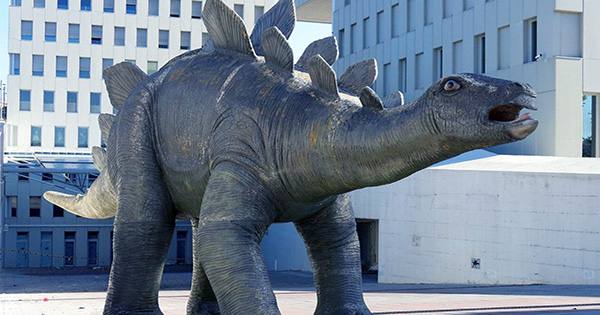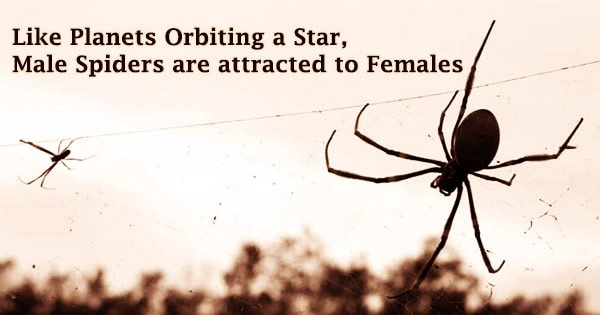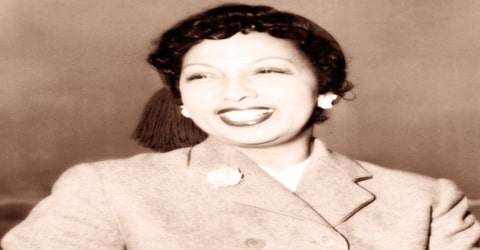Biography of Caroline Herschel
Caroline Herschel – German astronomer.
Name: Caroline Lucretia Herschel
Date of Birth: 16 March 1750
Place of Birth: Hanover, Electorate of Hanover, Holy Roman Empire
Date of Death: 9 January 1848 (aged 97)
Place of Death: Hanover, Kingdom of Hanover, German Confederation
Father: Isaac Herschel
Mother: Anna Ilse Moritzen
Fields: Astronomy
Awards: Gold Medal of the Royal Astronomical Society (1828); Prussian Gold Medal for Science (1846)
Early Life
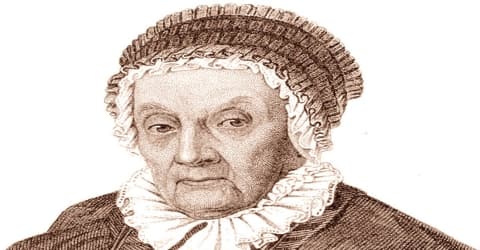
Caroline Lucretia Herschel was born on March 16, 1750, in the town of Hanover. She was a German astronomer who contributed significantly to the field of astronomy. Her most significant contributions in the field of astronomy are the discoveries of several comets and particularly, the discovery of the planet, Uranus. In an era where the world was a lot more patriarchal, she overcame her challenges and went on to earn a place in history.
At the age of ten, Caroline was struck with typhus, which stunted her growth, such that she never grew taller than four feet three inches. She suffered vision loss in her left eye as a result of her illness. Her family assumed that she would never marry and her mother felt it was best for her to train to be a house servant rather than becoming educated in accordance with her father’s wishes. Her father sometimes took advantage of her mother’s absence by tutoring her individually or including her in her brother’s lessons, such as a violin. Caroline was briefly allowed to learn dress-making. Though she learned to do needlework from a neighbor, her efforts were stymied by long hours of household chores. To prevent her from becoming a governess and earning her independence that way, she was forbidden from learning French or more advanced needlework than what she could pick up from neighbors.
Following her father’s death, her brothers William and Alexander proposed that she join them in Bath, England to have a trial period as a singer for musician brother William’s church performances. Caroline eventually left Hanover on 16 August 1772 after her brother’s intervention with their recalcitrant mother. On the journey to England, she was first introduced to astronomy by way of the constellations and opticians’ shops.
Caroline assisted her mother in the management of the household until 1772, when her brother, William, took her to Bath, Eng., where he had established himself as a teacher of music. Once settled in Bath, Caroline trained and performed successfully as a singer. Both she and William gave their last public musical performance in 1782 when her brother accepted the private office of court astronomer to George III. In addition to keeping house for her brother and grinding and polishing mirrors, she began executing the laborious calculations that were connected with his observations. As her interest grew, she swept the heavens with a small Newtonian reflector and made her own observations and astronomical discoveries.
She became the world’s first professional woman astronomer, her salary provided by King George III of Great Britain. The catalog of nebulae she produced brought her the British Royal Astronomical Society’s 1828 Gold Medal – the first awarded to a woman. She personally discovered five comets and rediscovered Comet Encke.
She returned to Hannover after William’s death in 1822 and soon completed the cataloging of 2,500 nebulae and many star clusters. In 1828 (when she was 77) the Astronomical Society awarded her its gold medal for an unpublished revision and reorganization of their work. She lived some 20 years longer and continued to receive the respect and admiration of both scientists and the general public.
’The Dinner Party’, an artwork with a feminist theme, intended to celebrate the accomplishments of great women from history, had mentioned Caroline Herschel.
Childhood, Family and Educational Life

Caroline Lucretia Herschel was born in the German town of Hanover on March 16, 1750, the eighth child of Isaac Herschel and Anna Ilse Moritzen. Isaac was a musician while Anna was illiterate and vehemently opposed the education of girls, believing they should work only at home. Anna objected to Isaac’s attempts to educate his daughters even opposing violin lessons.
Caroline’s education was quite informal, as she learned to read and write but didn’t receive a formal degree. She was just ten when she was diagnosed with the deadly Typhus disease, which imposed several challenges on the girl at a young age. The ailment curbed Caroline’s physical growth and her height was just a little more than four feet. The disease also made an impact on the girl’s eyesight. Her mom was apparently a bit skeptical about educating her and thought pursuing household chores would be the right thing for Herschel to do. However, her father, a rational thinker, imparted lessons in violin to his beloved daughter her mother’s absence.
Caroline was forced to focus more on household chores by her folks. They prevented her from being independent and even ensured the girl doesn’t learn French, since knowing this language would lead to a lot of job opportunities.
Following her father’s death, her brothers William and Alexander proposed that she join them in Bath, England to have a trial period as a singer for musician brother William’s church performances. Caroline eventually left Hanover on 16 August 1772 after her brother’s intervention with their recalcitrant mother. On the journey to England, she was first introduced to astronomy by way of the constellations and opticians’ shops.
In Bath, she took on the responsibilities of running William’s household and began learning to sing. William had established himself as an organist and music teacher at 19 New King Street, Bath (now the Herschel Museum of Astronomy). He was also the choirmaster of the Octagon Chapel. William was busy with his musical career and became fairly busy organizing public concerts. Life in Bath was not easy for Caroline: she was poorly educated and spoke little English. She did housework for William, who taught her English and mathematics. Breakfast was always taken with a math lesson.
William gave Caroline singing lessons two or three a day. She took dancing lessons, and by 1777, age 27, she was a notable soprano singing the lead in works such as Handel’s Messiah. She also performed on various stages, but surprisingly, on the insistence of her brother William, she turned towards Astronomy. The latter apparently needed Caroline’s assistance in managing his Astronomy catalogs and papers.
Personal Life
Caroline was devoted to her brother William, who had rescued her from drudgery and poverty. In 1788, William married Mary Pitt, a local widow, which seems to have made Caroline deeply unhappy. As time passed, however, relations between the two women improved. Caroline doted on John Herschel, the sole child from the marriage.
William died in 1822. He left Caroline an annual income in his will, enough for her to live very comfortably. Believing she would soon die herself, at age 72 she sought the familiarity of her childhood surroundings in Hanover and returned there to live with her brother Dietrich and his family.
Caroline remained unmarried all her life and was a spinster at the time of her death.

(Caroline and her brother William)
Career and Works
William stopped pursuing music eventually and devoted his time completely towards the manufacture of the telescope. He was assisted by Caroline Herschel in this endeavor. One of Caroline Herschel’s early astronomic breakthroughs was the discovery of the planet Uranus, along with her brother William, back in 1781. Caroline and William gave their last musical performance in 1782 when her brother accepted the private office of court astronomer to King George III; the last few months of their musical career had been a shambles and were critically panned.
This feat helped the siblings earn a lot of fame, especially among British citizens. William was even knighted for his great work and his sister was offered the designation of William’s assistant by the British royals. In addition, Herschel was offered an annual stipend of 50 pounds.
In March 1781, William discovered Uranus. Since prehistoric times, our ancestors had known Mercury, Venus, Mars, Jupiter, and Saturn. Herschel’s discovery of a new planet was a singular moment in the history of science: if a planet had remained unrecognized for so long, what else might be out there? After all, Uranus was actually visible to the naked eye!
Caroline’s path-breaking finding came in 1783 when she discovered Andromeda and Cetus Nebulae. She eventually went on to reveal 14 more Nebulae, a discovery which took the astronomical circles by surprise. Her brother William rewarded his beloved sister for her accomplishment and offered her a gadget called Newtonian Sweeper, which further helped in her astronomical endeavours.
On 28 August 1782 Caroline initiated her first record book. She inscribed the first three opening pages: “This is what I call the Bills & Rec.ds of my Comets”, “Comets and Letters”, and “Books of Observations”. This, along with two subsequent books, currently belong to the Herschel trove at the Royal Astronomical Society in London.
On 26 February 1783, Caroline made her first discovery: she had found a nebula that was not included in the Messier catalog. That same night, she independently discovered Messier 110 (NGC 205), the second companion of the Andromeda Galaxy. William then began to search himself for nebulae, sensing that there were many discoveries to be made. Caroline was relegated to a ladder on William’s 20-foot reflector, attempting impossible measurements of double stars. William quickly realized his method of searching for nebulae was inefficient and he required an assistant to keep records. Naturally, he turned to Caroline.
“But it was not til the last two months of the same year before I felt the least encouragement for spending the starlight nights on a grass-plot covered with dew or hoar frost without a human being near enough to be within call.”
Apart from the discovery of Comets, Caroline Herschel is known for discovering 2500 Nebulae, which is one of the reasons behind her widespread fame. The legendary astronomer also revised ‘British Catalogue’, a compilation of English astronomer John Flamsteed’s findings.
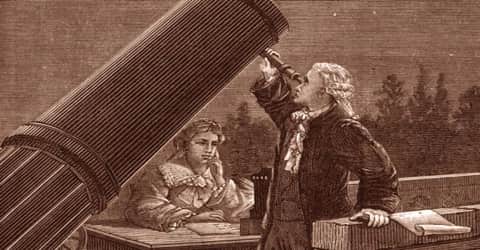
In October 1783, William finished building a superb instrument, an 18-inch (460 mm) reflecting telescope with 20-foot (6.1 m) focal length. He and Caroline became one of the most formidable team’s astronomy has ever known. Night after night, William would systematically observe different regions of the sky, calling out sightings, declinations, and right ascensions of nebulae. Caroline recorded the observations, making the necessary calculations to standardize them for factors such as time, then compiled the data ready for publication in journals. In twenty years of ceaseless exertion, William and Caroline increased the number of known nebulae from about 100 to 2,500.
During 1786–97 she discovered eight comets, the first on 1 August 1786. She had unquestioned priority as the discoverer of five of the comets and rediscovered Comet Encke in 1795. Five of her comets were published in Philosophical Transactions. A packet of paper bearing the superscription, “This is what I call the Bills and Receipts of my Comets” contains some data connected with the discovery of each of these objects. William was summoned to Windsor Castle to demonstrate Caroline’s comet to the royal family. William recorded this phenomenon, himself, terming it “My Sister’s Comet.” Caroline Herschel is often credited as the first woman to discover a comet; however, Maria Kirch discovered a comet in the early 1700s but is often overlooked because, at the time, the discovery was attributed to her husband, Gottfried Kirch.
She wrote a letter to the Astronomer Royal to announce the discovery of her second comet. The third comet was discovered on 7 January 1790, and the fourth one on 17 April 1790.
In 1791, Caroline began to use a 9-inch telescope for her comet-searching and discovered three more comets with this instrument. Her fifth comet was discovered on 15 December 1791 and the sixth on 7 October 1795. Caroline wrote in her journal during this time “My brother wrote an account of it to Sir J. Banks, Dr. Maskelyne, and to several astronomical correspondents” for the discovery of her fifth comet. Two years later, her eighth and last comet was discovered on 6 August 1797, the only comet she discovered without optical aid. She announced this discovery by sending a letter to Banks. In 1787, she was granted an annual salary of £50 (equivalent to £5,800 in 2018) by George III for her work as William’s assistant. Caroline’s appointment made her the first woman in England honored with an official government position, and the first woman to be paid for her work in astronomy.
At age 75, and in retirement, Caroline learned that William’s son John Herschel intended making an updated catalog of nebulae. To make life easier for her nephew, she undertook a huge reconstruction of the existing catalog so that known nebulae were listed by position rather than class.
In 1802, the Royal Society published Caroline’s catalog in its Philosophical Transactions of the Royal Society A under William’s name. This listed around 500 new nebulae and clusters to the already known 2000 Toward the end of Caroline’s life, she arranged two-and-a-half thousand nebulae and star clusters into zones of similar polar distances so that her nephew, John Herschel, could re-examine them systematically. The list was eventually enlarged and renamed the New General Catalogue. Many non-stellar objects are still identified by their NGC number.

Honor
Caroline Herschel was the first woman to be awarded a Gold Medal of the Royal Astronomical Society (1828), and to be named an Honorary Member of the Royal Astronomical Society (1835, with Mary Somerville).
She was also named an honorary member of the Royal Irish Academy (1838). The King of Prussia presented her with a Gold Medal for Science on the occasion of her 96th birthday (1846).
Death and Legacy
Caroline Herschel died peacefully, age 97, on January 9, 1848, in her home in Hanover. She was buried, with a lock of her brother William’s hair, beside her parents’ graves in the churchyard of the Gartengemeinde in Hanover.
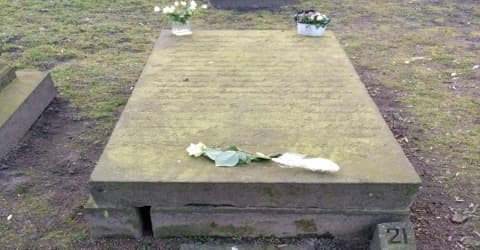
Her tombstone inscription reads, “The eyes of her who is glorified here below turned to the starry heavens.” With her brother, she discovered over 2400 astronomical objects over twenty years.
In her honor, an asteroid, ‘Asteroid 281 Lucretia’, named after her second name and a crater on the moon, ‘C.Herschel’ is named after her.
Adrienne Rich’s 1968 poem “Planetarium” celebrates Caroline Herschel’s life and scientific achievements. The artwork The Dinner Party, which celebrates historical women who have made extraordinary contributions, features a place setting for Caroline Herschel. Google honored her with a Google Doodle on her 266th birthday (16 March 2016).
Information Source:





